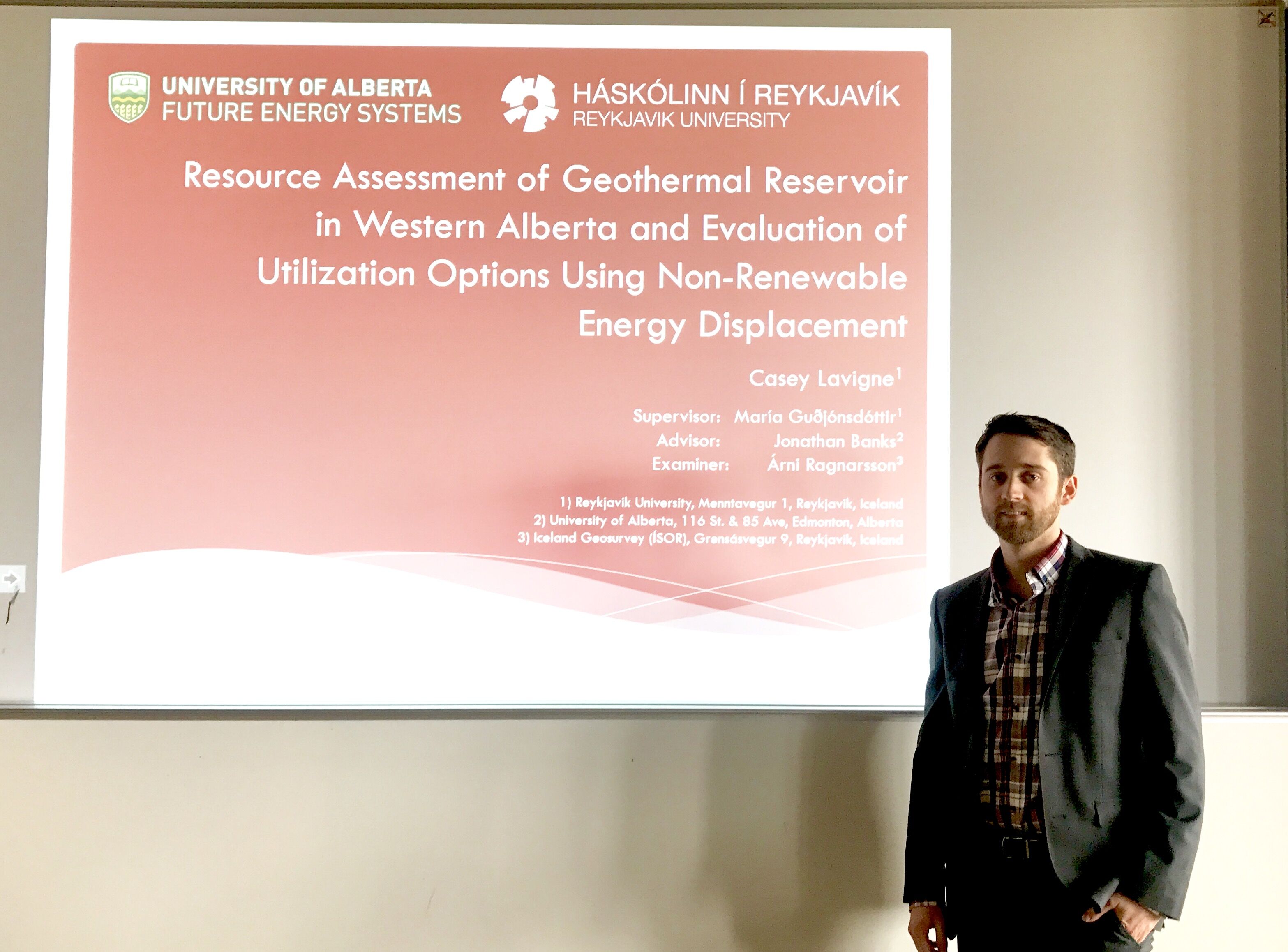MSc Thesis: Resource Assessment of Geothermal Reservoir in Western Alberta and Evaluation of Utilisation Options Using Non-Renewable Energy Displacement
Casey Lavigne successfully defends his master’s thesis
REYKJAVIK, May 27 - On the 8th of May, Casey Lavigne, MSc in Sustainable Energy Engineering successfully defended his master’s thesis project, in which he conducted a resource assessment of the geothermal reservoir in Western Alberta and evaluated the utilisation options using non-renewable energy displacement. Casey’s work was supervised by María Sigríður Guðjónsdóttir from Reykjavik University and advised by Jonathan Banks from University of Alberta.
 Casey started his presentation by discussing the worldwide energy consumption trend. In terms of renewable energy, hydropower is currently the largest contributor, while geothermal energy, although a major player in Iceland, it is not yet one in the global renewable energy mix. As a whole, most of the global energy demand and production are still dominated with fossil fuels. In addition to estimating the energy content of the resource, Casey’s research aimed to find out the utilisation method which results in the largest amount of fossil fuels saved. In particular, two development options, power generation and space heating, were modelled and analysed.
Casey started his presentation by discussing the worldwide energy consumption trend. In terms of renewable energy, hydropower is currently the largest contributor, while geothermal energy, although a major player in Iceland, it is not yet one in the global renewable energy mix. As a whole, most of the global energy demand and production are still dominated with fossil fuels. In addition to estimating the energy content of the resource, Casey’s research aimed to find out the utilisation method which results in the largest amount of fossil fuels saved. In particular, two development options, power generation and space heating, were modelled and analysed.
As his case study, Casey picked Hinton, a town that lies between the provinces of British Columbia and Alberta. According to Casey, Alberta is a suitable case study for his project since similar to the worldwide consumption trend, Alberta relies heavily on fossil fuels and in fact, has the 3rd largest oil reserves in the world. However, Casey also stated that this means Alberta provides unique opportunity for geothermal energy since the province can then repurpose wells for geothermal utilisation. A Monte Carlo simulations were used to determine an estimated wellhead thermal output of 227 MWth for a 50 years project lifetime. This is converted to a brine flow rate of 540 kg/s at an average temperature of 118°C.
Casey then analysed the two development options in EES. A binary power plant was modelled using the estimated geothermal flow. Casey found that the modelled power plant produced 12.1 MWe net power. A residential district heating system was also modelled, which resulted in a design capable of heating over 18,000 houses year-round. Specifically, the power plant scenario would provide 108 GWh annually, translating to a fossil fuel energy content savings of 649 TJ per year, while the district heating option provides 3840 TJ of thermal energy annually, translating to a fossil fuel savings of around 4267 TJ, an increase of 557% from the power generation scenario.
The results of Casey’s study would be applicable to any similar community located in an energy economy that is dominated by fossil fuels. Casey concluded that preference should hence, be given to space heating over power generation when developing geothermal resources in regions of high fossil fuels reliance. To read more about Casey’s work, click on the following link .
Congratulations, Casey on an excellent thesis!
